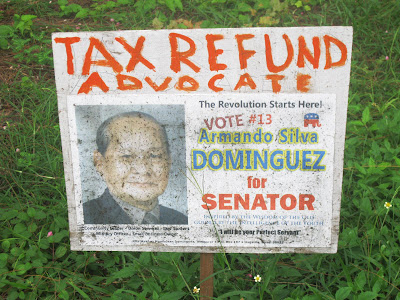Dancing and Decolonization (Hugua)
My third oldest child Lulai has officially started cultural dance.
Twice a week, at the MTM Community Center, she dances with Siñora Max Bigler-Tainatongo and the group Guma' Kinalameten i Taotao Tåno'. She is only three years old, much younger than the rest of the dancers, and literally doesn’t know yet the meaning of the word “discipline.” As such, during practices she more often than not dances to the beat of her own drum, causing chaos and confusion, rather than following the lead of others. Lao gof ya-ña sinembåtgo. But she likes it nonetheless.
For me, seeing one of my children in Chamoru cultural dance, is a beautiful moment of decolonization. For many people, they might connect decolonization to being political status change, such as Guam becoming independent or a state or a freely associated entity. Others might hear decolonization and think of it through some of the misconceptions out there of the idea. They might think of it as being, trying to go back in time or trying to erase all traces of the colonizer.
Decolonization can mean many things, but on a practical everyday level, I sometimes like to think of it as having a frank, sobering and very real conversation about colonial legacies and where do we go next. It isn’t about denying the past or living in the past. But it is asking real question about what has happened, what was its impact, and do the legacies, the systems, the remnants of that colonial history, do they benefit us today or do they hold us back? And if they don’t serve us, how should we do things differently to better improve our community?
When I think of decolonization in the context of cultural dance, it is similar to this, but albeit in a more poetic and philosophical way.
Following European colonization, dances once practiced by Chamorus were prohibited or forgotten. This didn't mean that Chamorus stopped dancing, they adopted and adapted dances from other cultures and countries, and keep that spirit alive as part of their reality. But the idea that they could have dances of their own was lost for most, sealed away in the past by colonization. They danced the båtso and the stick dance, but always acknowledged that while they were a part of Chamoru culture, they were also someone else’s and not theirs.
What we've seen in the past 40 years is different cultural leaders working to break that seal on our sovereignty, and in doing so, foster a stronger connection to our past prior to colonization, and one of the most beautiful ways they have done so, is through cultural dance, chant and performance, Ancient themed dance. Figures such as Frank Rabon, Leonard Iriarte and Vince Reyes, all recognized Masters of Chamoru Culture in Guam, have all done incredibly powerful work in this regard.
These dances are not meant to represent how Chamorus might have danced in the past in a historical sense, but rather be homages, ways of honoring, connecting. But more than anything, what they represent is the restoring of that sovereign feeling of the ability to embody and create again. That the weight of the history that has led to this moment, continues to influence and effect us for sure, but it does not chain us in all the ways that our ancestors of the past might have felt.
Just because we may not know how exactly our ancestors might have danced 1000 years ago, it does not mean we cannot dance today. It does not mean we cannot dance now, cannot dance into the future, and we cannot dance in their honor.
Biba hagå-hu, gof magof yu' na bumabaila hao, put i minagof-mu ha', put i taotao-ta, put maseha håfa na rason, magogof ha' yu'.




Comments